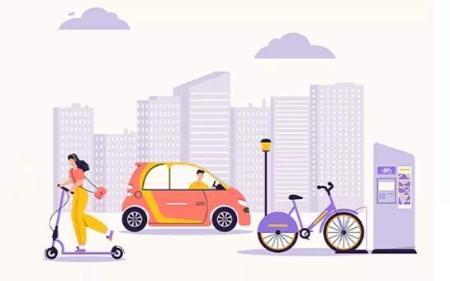Mobility: an obstacle to the integration of young people?
March 2025
Réseau pour la transition énergétique (CLER)
In 2024, the Apprentis d’Auteuil education barometer looked at the impact of mobility on the social and professional integration of young people supported by the foundation. Three quarters of them have already given up a job or training opportunity because of a mobility problem.

Whether by public transport or car, in urban or rural areas, getting around when you are between 18 and 25 years old is not always easy. This is what emerges from the study carried out among 2,000 young people supported by the Apprentis d’Auteuil charity. Lack of public transport, unreliable timetables, excessively high season ticket prices, or insufficient financial means to get a driving licence or buy and maintain a vehicle: 76% of them have given up on a job or training at least once because they did not have a transport solution.
This is a reality that Clément Baticle, project manager of the Locomotiv’ at the Apprentis d’Auteuil in the Alpes-Maritimes, observes on a daily basis. ‘We support people aged 16 to 29 who come to us saying ‘I’m looking for a job or training but no one will take me on because I don’t have a driving licence’, or who have found a job but don’t know how to get there, or who don’t know about the reduced fares to which they might be entitled.’ Locomotiv’, a place dedicated to inclusive mobility, tries to remove these obstacles by various means. From the simplest, such as explaining the transport network and the pricing system, to financing a subscription to the regional express train (TER) or the rental of electric bikes.
Young people not particularly attracted by soft mobility
‘Getting a driving licence is not the first solution we offer, but we are well aware that it is the best solution for many people,’ admits Clément Baticle. ’That’s why we also organise workshops on the Highway Code and road safety, and why we advise those who have a driving licence project.’ The Apprentis d’Auteuil barometer also shows that on a daily basis, 68% of the young people surveyed prefer to use the car rather than public transport (32%), and only 24% travel by bicycle at least once a week.
This does not surprise Thibault Hardy. As a project manager with the Walking and Cycling Network, he works on promoting active mobility in priority urban policy neighbourhoods (QPV), where it is less used than in non-QPV areas. For example, the use of bicycles is 1.9% in QPVs compared to 2.8% in non-QPVs. ‘As everywhere, the question of infrastructure, speed and secure parking are decisive factors in its use. But there are also factors that are more specific to QPVs, such as being able to buy and maintain a bicycle, and knowing how to get around with it. There is also an image issue. For some young people, it is associated either with childhood or leisure, and not so much with a credible mode of transport. This rather negative image can also refer either to ‘a hipster thing’ or to food delivery. Whereas the car is considered a symbol of success.
Changing the image of the bicycle
However, as promoted by the Cycling and Walking Network, the bicycle is less expensive than a car, and can be a vector for jobs related to cycle logistics, sales, repairs and events. These advantages are not enough to convince young people living in deprived urban areas. ‘To achieve this, it is essential that local authorities continue to develop suitable infrastructure and that social landlords provide secure premises,’ emphasises Thibault Hardy. ’But it is also necessary to facilitate access to cycling through financial assistance and learning workshops. Festive moments around cycling and events such as the bike trip organised last summer by Banlieues Climat also make it possible to show other models and inspire young people.’